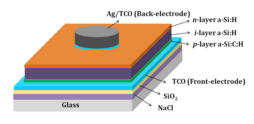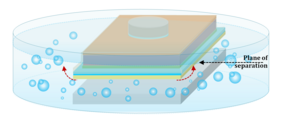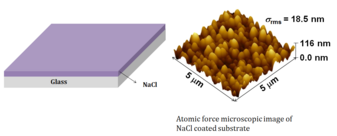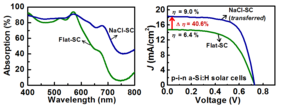Researchers at Aarhus University develop highly efficient transferable solar cells using table salt
Technique combines photon-harvesting strategy with detachability in silicon thin film solar cells
![[Translate to English:] Bordsalt gør det let at flytte tynde solcellefilm](/fileadmin/site_files/nyheder/Image_of_Table_Salt.jpg)
Scientists at Aarhus University, Denmark, and Institute for Microelectronics and Microsystems, CNR, Bologna, Italy
have developed a new low-cost method for creating highly efficient silicon thin-film solar cells that can be detached from the growth substrates and transferred to diverse surfaces. The new method paves the way for adherable solar cells that can be integrated into consumer electronics, sensors, building components and wearable devices.
The researchers transferred a silicon solar cell using this technique to an inexpensive plastic sheet with a post-transfer efficiency of 9%, the highest ever reported by any technique of solar cell transfer.
A constraint for a wider deployability of solar cells is that they cannot be, at present, integrated onto a variety of surfaces. A feasible technique that could enable fabrication of high-efficiency thin-film solar cells on optimum glass substrates and later allow the detachment and transfer of the solar cell to other surfaces while freeing up the substrate for further deposition cycles could open up new disruptive directions in solar-cell technology. The first steps towards such a detachable solar cell have been made using a surprisingly simple idea: Ordinary kitchen salt will dissolve, when dipped in water.
Click image for a gif of the process
A collaboration between Aarhus University and CNR-IMM Bologna has successfully created a high efficiency amorphous silicon solar cell that is fabricated on a regular glass substrate, but with an intermediate layer of NaCl (salt) crystals. By dipping this solar cell and its substrate in lukewarm water, the salt dissolves, the ultra-thin solar cell layer can be detached from the growth substrate and transferred to any other surface, and the expensive glass sheet on which solar cells are fabricated can be cleaned and reused.
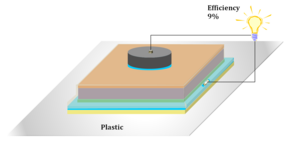

The detached solar cell was transferred to another surface, in this case a sheet of blank plastic, and found to perform as well as it did before the transfer. Dr. Sanjay K. Ram, an associate professor at Aarhus University is delighted with the result, and explains some of the difficulties: "An important challenge in such an endeavor is the roughness and the chemistry of the sodium chloride layer that can damage the solar cell grown over it. We have succeeded in fabricating highly-efficient solar cells on the salt-coated substrate by using barrier layers to protect the silicon material from the chemical effects of the sodium chloride. Further, we have turned around the challenge of the roughness of the salt layer into an advantage, by material and design optimization so that the roughness actually results in nanophotonic features in the solar cell. These nanoscale rough features in the solar cell layers and layer-interfaces lead to absorption of more light in the solar cells resulting in enhanced efficiency."
Dr. Rita Rizzoli, senior scientist at CNR-IMM Bologna where the silicon layers were grown, added, "The post?transfer efficiency of 9% is the highest among all reported transferred thin?film solar cells, which is a remarkable outcome. It is highly encouraging to develop a way to enhance efficiency using a technique as simple and low-cost as this.”
Finally, Prof. Peter Balling, head of the semiconductor group at Aarhus University looks at some of the future prospects of the new technique: "We are delighted with the outcome of this study. The result represents a true milestone, which was obtained after a dedicated research endeavor made possible by Innovation Fund Denmark through the THINC project. We are grateful for the trust the Innovation Fund showed us by financing this international research project – and of course pleased to present this new technology as a direct outcome of their investment. We are presently developing projects based on the new concept that will explore the transfer of these solar cells to a variety of surfaces for specific applications – also in collaboration with relevant industrial partners."
The work was funded by Innovation Foundation, Denmark under the projects THINC and SunTune, and the experiments were carried out at Aarhus University and CNR-IMM Bologna, Italy.The study has been published in the reputed journal Nanoscale.

